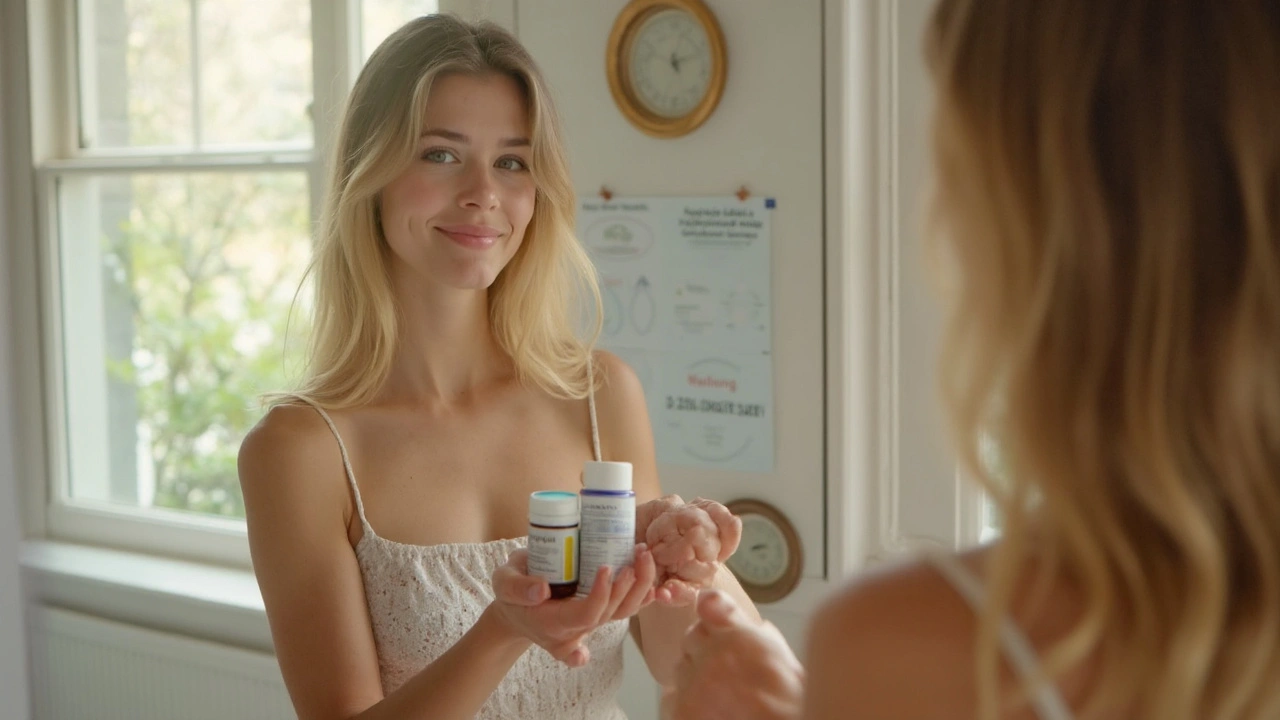Salicylic Acid: Uses, How to Use, and Safety
Salicylic acid is a common ingredient in acne products, wart treatments, and exfoliants. It's a beta hydroxy acid that helps shed dead skin, unclog pores, and reduce scale. People use it in cleansers, toners, gels, and pads. You can find over the counter options from 0.5% to 2% for face care and stronger formulations from 10% to 40% for wart removal at clinics or in peel kits.
For acne, start with a low concentration like 0.5% or 1% once a day. Apply to clean, dry skin and follow with a moisturizer if you feel tight or dry. If your skin tolerates it, you can increase frequency to twice daily. Avoid using multiple strong acids or retinoids at the same time to reduce irritation.
How to use salicylic acid safely
Patch test new products on the inner wrist for 24 hours to check for reactions. Use sunscreen daily because salicylic acid can make skin more prone to sunburn. Do not apply to open wounds or rashed skin unless a healthcare provider tells you to. For wart treatments, follow the product instructions carefully. Soak the area, file the thick skin gently, then apply the medication. Covering the treated area may increase effectiveness but also raises the risk of irritation.
Who should be careful
Children under two years old should not use salicylic acid products without medical advice. People with diabetes, poor circulation, or thin fragile skin should ask a doctor before treating warts or rough patches. If you have a known allergy to aspirin or other salicylates, check with your healthcare provider. Topical reactions are uncommon but possible. If you experience severe burning, swelling, breathing difficulty, or a widespread rash, stop use and seek medical help.
Using multiple products that contain salicylic acid or combining it with strong chemical peels increases the chance of redness and peeling. If you are on prescription acne treatments like tretinoin or benzoyl peroxide, ask your dermatologist how to combine therapies. Often staggered use at different times of day helps reduce irritation while keeping benefits.
Small, regular use works better than aggressive treatments. For everyday maintenance, a gentle cleanser or leave on product with 0.5 to 2% salicylic acid can reduce blackheads and control oil. For stubborn warts, clinical options like cryotherapy, higher concentration treatments, or minor office procedures may work faster. If unsure what to try, a pharmacist or dermatologist can recommend the right strength and routine for your skin.
Shopping tips: pick products from reputable brands and read the ingredient list. If the label shows mainly salicylic acid and simple solvents, it's easier to predict how your skin will react. Avoid products with alcohol if you get very dry. Store treatments in a cool, dry place and discard if the formula changes color or smell. Pregnant or breastfeeding people should check with their doctor before using strong topical salicylates. When in doubt, ask a pharmacist who can point you to a product strength that fits your skin.
